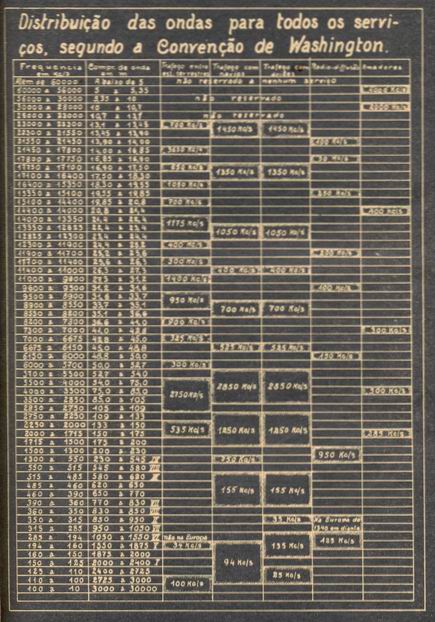|
In the early twenties, began with amateurs assigned 200-250
m, i.e. 1500-1200 kHz.
Due to the increase of amateur licenses, in 1935 the relative
density of stations per kilohertz on the air was over 8 times
when compared with 10 years before. Thus, the familiar amateur
bands 160-80-40-20 and 5 m had been assigned. This radio boom
was due to the improvement in the transmitter technology by
the elimination of several factors affecting the frequency
stability for self-controlled oscillators.
The home wireless experiments era gave birth to the factory
made equipments with many technological innovations responsible
for so many advances in radio communication. Fig 291
 |
| Fig. 291 - Frequency allocation chart
according the Washington convention in 1927. |
|